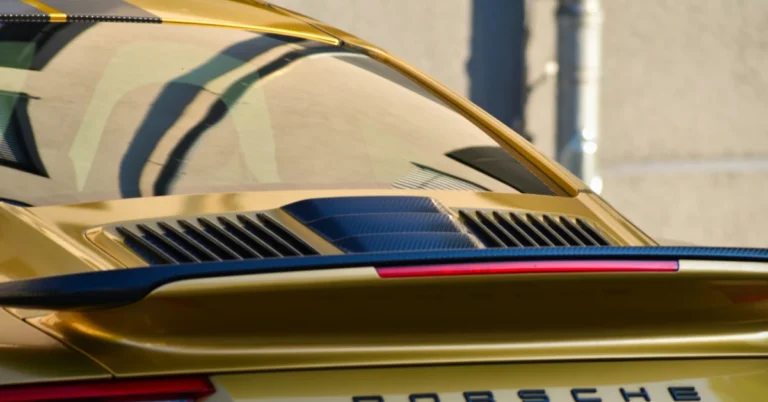Jump starting a car is a fairly common occurrence, especially during colder weather when car batteries may be more susceptible to losing charge. Being prepared to jump start your car properly is essential to get back on the road quickly and safely. One important factor to consider is how long you should keep your car running after giving it a jump.
How Long to Run Car After Jump

Experts generally recommend running your car for 30 minutes after jump starting it, as it provides ample time for the battery to recharge. However, in reality, you can continue operating your car like normal after just five minutes of running the engine. Keep in mind that if you have a new battery, 5-10 minutes may be sufficient to bring the battery back to an adequate charge level.
Knowing when to replace your car battery is crucial for preventing jump-starting issues in the future. Car batteries typically last three to six years, depending on how well you maintain them.
Understanding the Jump-Start Process
The Role of the Alternator
The alternator plays a critical role in your car’s electrical system. It converts mechanical energy into electrical energy, which charges the battery and powers the various electrical systems in the car. When you jump-start a vehicle, the alternator starts recharging the dead battery and keeps the charging system running smoothly. It is essential for the alternator to function properly, as a faulty one can lead to repeated jump-starts and multiple battery charges.
The Importance of Battery Charge
A fully charged car battery is crucial for your vehicle’s performance. The battery functions as a reservoir for the electrical power generated by the alternator. A healthy battery ensures that the car starts up easily, its electrical components work efficiently, and the system won’t be overtaxed. Jump-starting your car with jumper cables doesn’t instantly provide the required charge; you need to run the car for a while to sufficiently recharge the battery.
Identifying a Dead Battery
Detecting a dead battery is crucial in preventing damage to your car’s charging system. Here are some symptoms that suggest a dead battery:
- Slow or non-existent engine cranking
- Dimming headlights
- Weak or no power to accessory components (such as the radio or interior lights)
Running your car for about 20 to 30 minutes after a jump-start will allow the alternator to recharge the battery to a sufficient level. If you frequently need to jump-start your car, it’s a sign that your battery might be reaching the end of its lifespan, or there may be an issue with other components like the starter or alternator. In such cases, seeking professional help is advised.
Post-Jump-Start Procedures

Initial Steps After Jump-Starting
Once you’ve jump-started your car, it’s essential to follow proper post-jump-start procedures. Begin by carefully disconnecting the jumper cables in reverse order, starting with the black (negative) cable on the booster car and ending with the red (positive) cable on the dead car. Remember never to touch the metal clamps together during the removal process.
How Long to Run Your Car
To help replenish the battery, you should run your car after a jump. Ideally, you should drive for at least 30 minutes or keep the engine idling, allowing the alternator to charge the battery^1^. Driving on the highway can provide an even better opportunity for recharging, as the car’s alternator can generate sufficient power at higher speeds.
Here are some factors to consider while determining how long to run your vehicle:
- Battery age and overall health
- Driving conditions (e.g., city or highway)
- Car make and model
For a more accurate assessment of your battery’s charge, you can use a battery voltage measurement tool or consult your car’s on-board diagnostics system.
Signs of a Fully Charged Battery
There are a few indicators that your car battery is fully charged after a jump-start:
- No warning lights: The absence of battery or alternator warning lights on your dashboard signifies a properly functioning charging system.
- Stable voltage output: A fully charged battery should provide a voltage output of around 12.6 volts when the engine is off and 13.7-14.7 volts when the engine is running^3^.
- No trouble starting: If your car starts without any hiccups after being shut off and parked for a while, it’s likely that the battery has been charged sufficiently.
If you’re unsure about your battery’s health after jump-starting, consider using a battery charger or visiting a professional mechanic for a comprehensive check, including an inspection of the voltage regulator and battery terminals. Proper maintenance and care can prolong your battery life and help prevent future incidents of a dead battery^4^.
Frequently Asked Questions

How long should I drive my car to fully charge the battery after a jump start?
After jump-starting your car, it’s recommended to run the engine for at least 30 minutes to allow the battery to charge fully and regain its optimal power. However, for a new battery, 5-10 minutes of driving should be sufficient.
Is it necessary to replace a car battery after it has been jump-started?
Car batteries are designed to last three to six years, depending on their maintenance. If your battery shows signs of weakening or frequent jump starts are needed, check the expiration date. If it’s over three years old, consider replacing it.
Can a car battery recharge properly while the engine is idling?
While a car engine can recharge the battery while idling, driving the vehicle is more efficient. Running your car for 30 minutes or taking it for a drive will more effectively charge the battery.
Does revving the engine aid in charging the battery more quickly?
While revving the engine may increase the alternator’s output, it isn’t an efficient method to charge the battery quickly. Driving your car or running the engine for 30 minutes is a better option for charging the battery.
How long should jumper cables remain connected once the car has started?
After the car with the dead battery has started, you can immediately disconnect the jumper cables. It’s important to remove them in the reverse order in which they were connected. The car’s alternator will continue to charge the battery while the vehicle is running.






